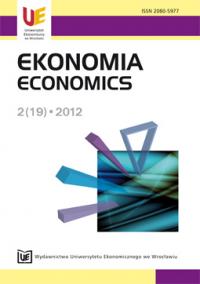Centra Integracji Społecznej i ich efektywność w procesie reintegracji społecznej i zawodowej osób marginalizowanych.
Centres of social integration and their role in the process of social and professional reintegration of marginalized persons
Author(s): Andrzej Koza, Adriana PolitajSubject(s): Economy
Published by: Wydawnictwo Uniwersytetu Ekonomicznego we Wrocławiu
Keywords: unemployment; exclusion; reintegration
Summary/Abstract: The aim of this study is an attempt to present the activities of the centers of social integration, and the assessment of the effectiveness of their activities in the field of social reintegration of marginalized persons due to long-term unemployment. Methods: analysis and criticism of legal instruments, analysis and criticism of literature and statistical analysis. Social integration centers are one of the main institutions since 2004, within which social and employment reintegration of the marginalized persons takes place because of long-term unemployment. During these programs the long-term unemployed learn certain professions, resourcefulness and try to return to a full social and professional life. In the period of 2007-2010 the number of centers increased from 53 to 70 of such kind of institutions. During this period, as a result of the activities carried out in these institutions, more than 2900 of the long-term unemployed became economically independent. The main source of financing social integration centers throughout the whole analyzed period, was public money from the budgets of districts, Labour Fund and the European Union Funds. In the years 2007-2010 in Poland, the centers collected a total of 121 million zlotys, which gave an average of 17.5 thousand zlotys per an independent person. The centers do not fulfill their role because of low effectiveness in terms of bringing the participants to full economic independency. The main problem of these centers is the relatively high cost of maintaining this type of institution and much smaller interest of local government in their development and financing. From another point of view, clubs of social integration, which conduct similar activities and absorb less funding become more and more important.
Journal: Ekonomia
- Issue Year: 2012
- Issue No: 19
- Page Range: 126-137
- Page Count: 12
- Language: Polish

